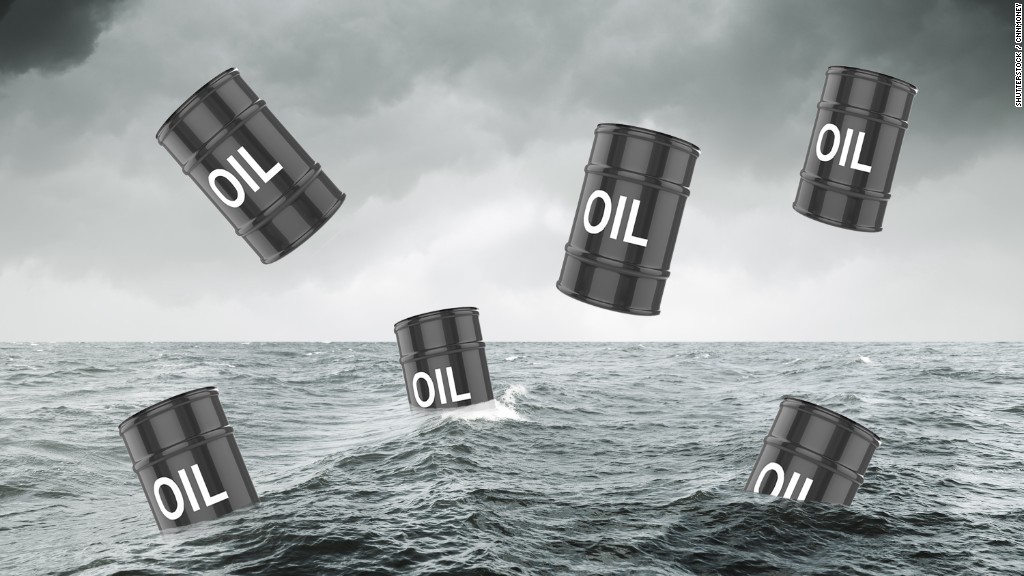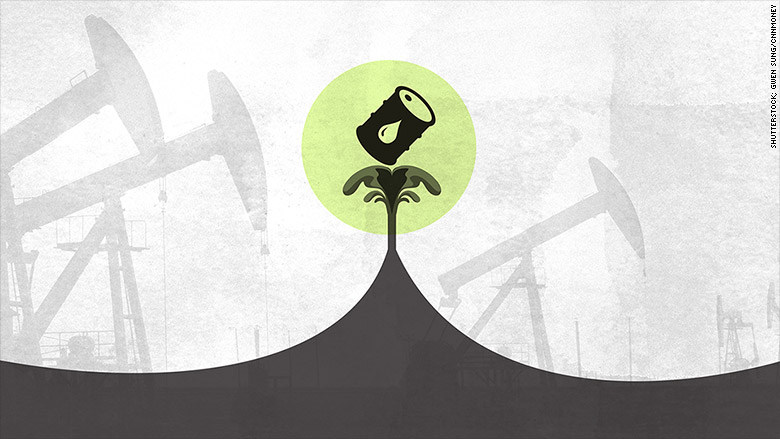
Oil prices continued on their wild roller coaster ride Tuesday, as weak Chinese manufacturing data sent prices tumbling lower.
A 7% dive to $45 a barrel comes after prices soared higher to close Monday above $49 a barrel -- a nearly 30% rise in three days.
Just a week ago, oil plummeted below $38 a barrel for the first time since 2009.
The drop in prices Tuesday following the Chinese factory report seemed to make more sense than the rapid rebound. Concerns about a slowdown in Chinese economic growth has been one of the factors driving prices lower.
Concerns in markets about a supply glut may have been eased a bit on Monday with a new government report that downgraded its estimate for U.S. oil output so far this year.
But that report hardly appeared to justify the surge in oil prices that followed. And U.S. oil production is still up from a year ago.
Oil prices were also boosted by hope that OPEC may finally be willing to cut back on output in an effort to balance the market. It was fueled by an OPEC publication released Monday that reiterated that the oil cartel "stands ready to talk to all other producers."
Related: $2 gas is coming soon
Wild swings driven by gambling
Emotionally, in the short term, a lot seems to have changed in the oil market. That can happen when a turbulent commodity mixes with outsized bets by large investors like hedge funds.
"It's really being driven by the speculators. That's why we're seeing such wild swings," said Anthony Starkey, energy analysis manager for Bentek Energy, an analytics and forecasting unit of Platts.
The big volatile swings in oil markets over the past year has made it a sexy area for investors to gamble by making bets on prices. But when bets go the wrong way, it leads to panic trading.
Investors who bet oil would go lower last week, for instance, are now panic buying to cover their losses.
"As with all commodity markets there is volatility. You have exuberance on the upside and panic on the downside," said Vincent Piazza, an analyst at Bloomberg Intelligence.

Related: Why Saudi Arabia won't cut oil production
Sub-$50 oil looks unsustainable
Oil bulls have also been boosted by a number of other factors.
Matt Sallee, a portfolio manager at Tortoise Capital, pointed to a bullish report showing crude stockpiled declined sharply last week, the stronger-than-expected U.S. economic growth for the second quarter, and more geopolitical tension between Saudi Arabia and Yemen.
"Oil prices below $50 are not sustainable for the long term. I think everyone realizes that," Sallee said.
Related: Can Big Oil afford to keep paying dividends?
Price spike could be (another) head fake
So does all of this mean oil prices bottomed out last week? Not necessarily.
Don't forget that oil prices spiked from $42 in mid-March to nearly $65 in early May -- before collapsing again over the summer.
"I'm looking for a repeat of that. I'm pretty confident it's just a bear market correction, though it could last for a few months," said Walter Zimmerman, chief technical analyst at United-ICAP.
The problem is that higher oil prices will only exacerbate the supply glut by encouraging more drilling.
Plus, if the Iran deal gets approved next month, it could pave the way for a flood of new oil to hit the market.


